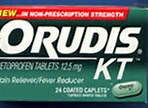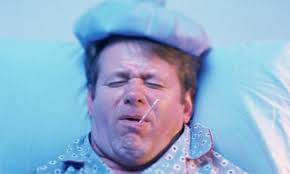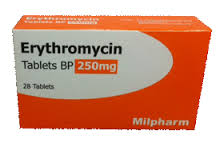Encinitas, CA Two recent published studies reviewed the use of FDA approved drugs in Mice that reversed some myotonic dystrophy symptoms. The mice showed improvement in muscle strength after a regime of using these approved rugs in appropriate dosages.
My son Chris has Congential Myotonic Dystrophy with a repeat count of about 1700. He is severely affected being non-verbal, cognitive delays, autistic spectrum disorder, and some muscle involvement. Chris also has the adult form of the disease as he reached puberty and has a level 1 heartblock, excessive sleepiness and other adult symptoms.
He has had 3 bouts of respiratory collapse. This initially involved a Hospital Stay, MSRA pneumonia. Within a very short period of time of initial symptoms he was in the ICU on a respirator and full dosages of heavy antibiotics including vancomycin. Recovery was uncertain and very slow. Tracheotomy was performed as weaning from the respiratory was difficult and dangerous. Full recovery was accomplished at 120 days. USA Hospital costs was approximately $750,000 for this. Two other bouts of respiratory collapse related to pneumonia occurred with similar outcomes.
We decided to pursue an experimental course of treatment with these FDA approved drugs due to concerns that he might not survive another bout of respiratory collapse.
In April 2016 we initiated a course of treatment on Erythromycin after consultation with pneumologist, cardiologist, cardiology expert in DM, and primary care Physician. The Primary care physician wrote the script for erythromycin. The cardiology team was involved as there is a contraindication for erythromycin with cardiac arrhythmia’s. The course was 2X daily 125mg of Erythromycin orally.
In May 2016 we added a daily dose of 80 Mg of Ketoprophen as this drug was found to have a positive effect on mice as well in ameliorating the myotonic dystrophy symptoms.
Results: We did not use any formal metrics in evaluating the results of the trials. The main reporting point was discussions with caregivers to see if there was any improvement in cognitive or strength related improvement in the patient. These conversations were all convergent in :
Overall Muscle strength NOT IMPROVED
Overall Cognitive Abilities NOT IMPROVED
Chest Congestion DECREASED SOUNDS
OF SECRETION CLEARING
# of Pneumonia Infections IMPROVED
Overall the results of this 8 month trial did not replicated the information in the two mice studies. There was no increased muscle strength noted by caregivers. There did seem to be a significant improvement in clearing secretions in the lungs which is a critical factor in this patients Quality of Life (QOL). No Pneumonia infections were reported. this is a significant improvement over the last 12 months.
Discussion: Overall it appears that this therapy may have had an positive impact on the patient. Overall the results of this one case did not replicate the studies that used mice in terms of improvements in muscle strength. this may be due to a number of reasons including dosing strength. It could also be that the mice that are created to have myotonic dystrophy are not the ideal method to test drugs the the DM in these mice may be more susceptible to disruption that the actual DM gene in human patients.
Patients with Congenital Myotonic Dystrophy and certain other patients (older than 57) are currently excluded from clinical new drug trials. Myotonic Dystrophy is slowly progressive until an exponential event occurs. Because of the risk of sudden death and pneumonia with these cases is ongoing looking for alternatives to reduce risk of death may be warranted by patients health care team.





